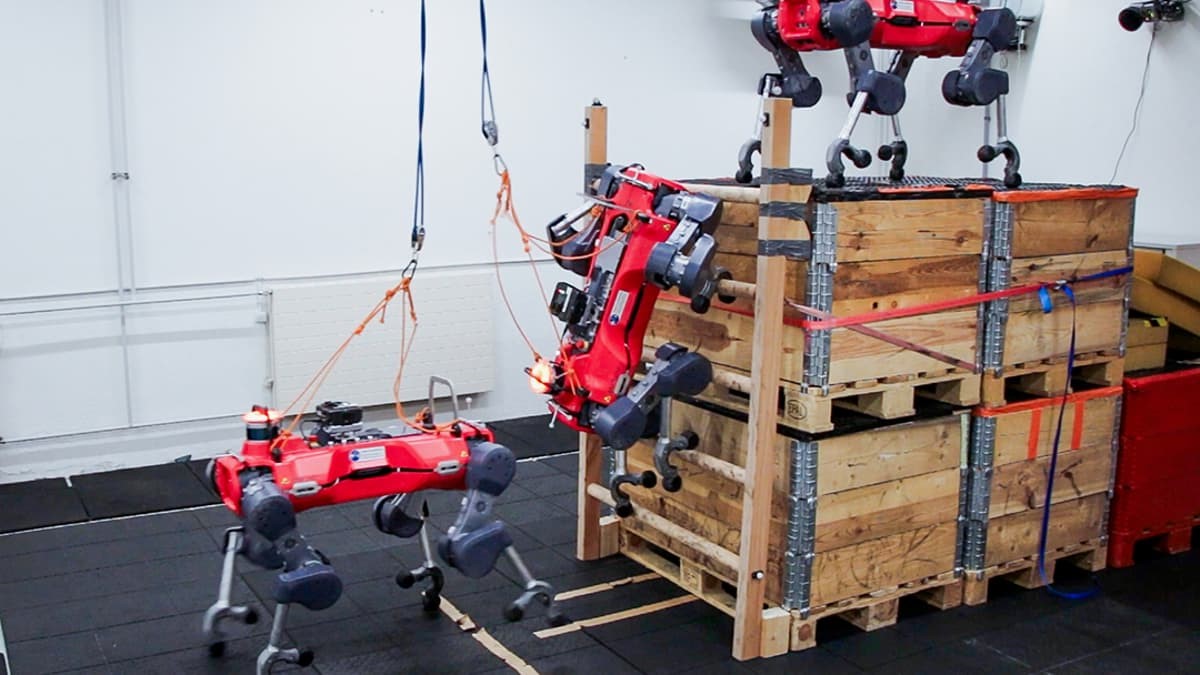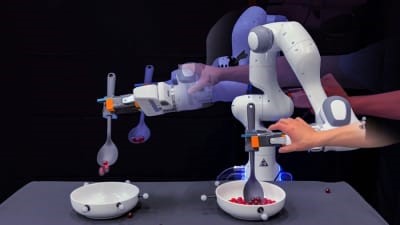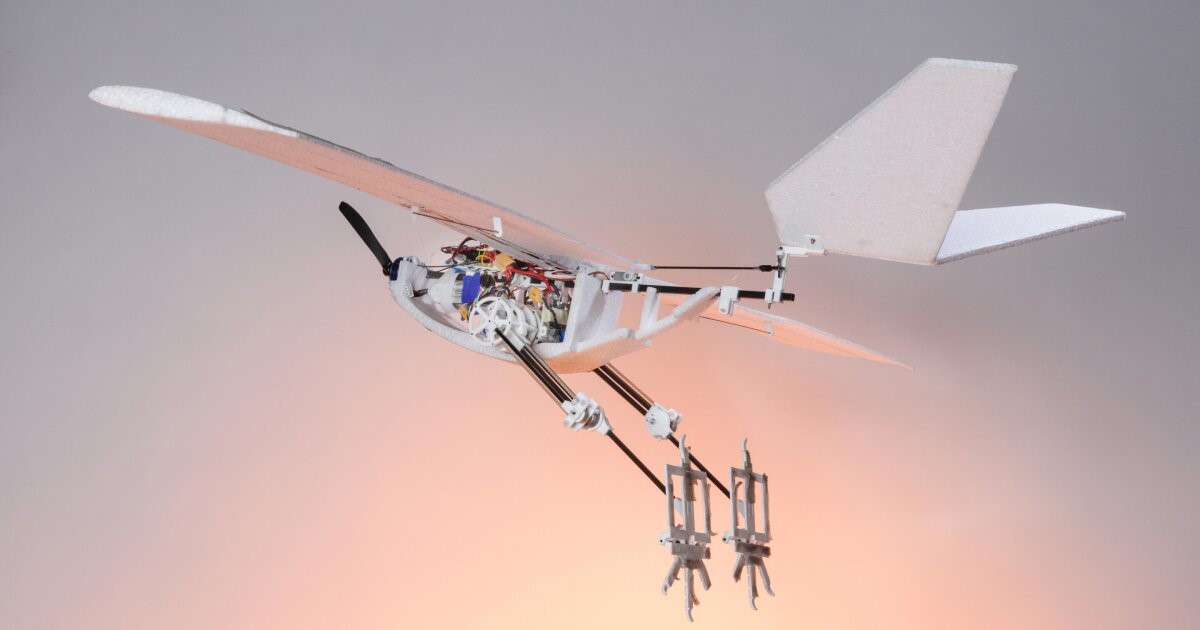Versatile Quadruped Robot Climbs Ladders Faster Than Ever
The ANYmal quadruped robot not only walks on four legs but can also roll on four wheels, stand upright, throw boxes, and navigate stairs. Now, it has added ladder climbing to its impressive repertoire.
Developed by engineers at the ETH Zurich research institute, the ANYmal quadruped robot first gained attention in 2017 for its ability to use elevators in high-rise buildings. [1] Since then, it has become commercially available through ETH spinoff ANYbotics, with a wheeled version now marketed as the Swiss-Mile robot by another startup.

Figure 1. A multiple exposure showing the modified ANYmal robot climbing a ladder
The current model of the ANYmal robot walks at a speed of 0.75 m (2.46 ft) per second and can travel across indoor or outdoor terrain for 90 to 120 minutes on a single battery charge. It is equipped with sensors including a 360-degree lidar module, six depth-sensing cameras, and two optical cameras, all of which provide data to two Intel 6-core processors. Figure 1 shows A multiple exposure showing the modified ANYmal robot climbing a ladder.
This advanced technology enables the ANYmal robot to autonomously carry out tasks like safety and security inspections in environments such as factories, gas plants, warehouses, and even mines. However, parts of these locations are only accessible via ladders, a task that the standard ANYmal robot was previously unable to perform.
To overcome the limitation of ladder climbing, a team of ETH Zurich roboticists, led by Dylan Vogel and Robert Baines, modified the ANYmal robot by replacing its feet with four "hooked end effectors." These C-shaped appendages enable the robot to apply both compressive and tensile forces to the ladder rungs. By pushing down on lower rungs while pulling itself up on higher ones, the robot can stabilize its center of mass and successfully climb the ladder.
The hooked end effectors wouldn't be effective without proper guidance, so the team employed a "privileged teacher-student reinforcement learning approach." Simply put, this method involves training a virtual "teacher" using a computer model where all variables—like ladder angle and rung spacing—are known. Meanwhile, a virtual "student" is trained to mimic the teacher’s actions, but only using noisy, real-world sensory data. This enables the robot to learn how to use the effectors correctly in a variety of conditions.
The virtual student, equipped with knowledge from the teacher and sensory data, is then integrated into the software used by the physical robot to climb ladders. [2] In lab tests, the modified ANYmal achieved a remarkable 90% success rate at ascending ladders with angles ranging from 70 to 90 degrees. Furthermore, it climbed these ladders 232 times faster than any other ladder-climbing robot, whether bipedal or quadrupedal.
References:
- https://www.electronicsforu.com/news/can-a-quadruped-robot-climb-ladders
- https://newatlas.com/robotics/anymal-quadruped-robot-climbs-ladders/
Cite this article:
Janani R (2024), Versatile Quadruped Robot Climbs Ladders Faster Than Ever, AnaTechMaz, pp. 98















